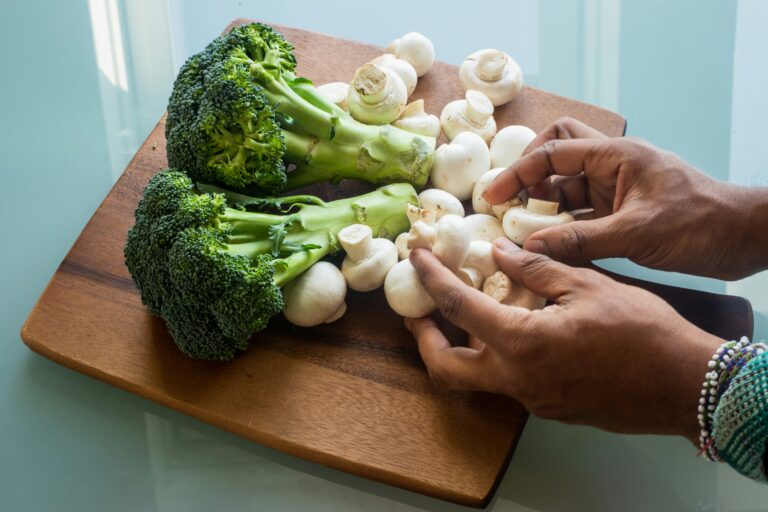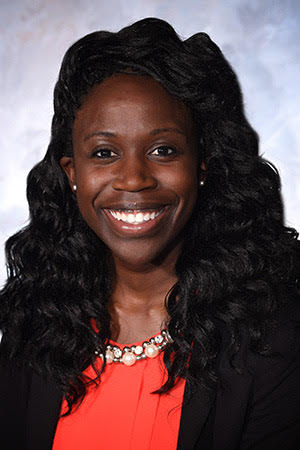Thread the needle (also known as urdhva mkha pasasana in Sanskrit) delivers a deep stretch to your neck, shoulders, and back (the ultimate three-fer), alleviates pain and stiffness, increases spinal mobility, and so much more.
Read on to learn why you need a little thread the needle in your life.
In This Article
Experts In This Article
How to do thread the needle pose
There are two ways to perform the pose: as a static or active stretch. Static (or passive) stretching involves holding a still position to stretch your muscles, while active stretching means you contract your muscles as you stretch them.
The more effective way to perform thread the needle is by turning it into an active stretch, says Grayson Wickham, DPT, CSCS, physical therapist and founder of Movement Vault. You’ll get more bang for your buck as far as lengthening and activating your muscles. Here’s how to do it.
- Begin on your hands and knees.
- Lift your left hand off the ground and reach it under your body toward the right, allowing your shoulder and the side of your head to lower to the floor. Your right arm should stay straight, supporting your weight as you twist.
- As you “thread” your left arm under your right, aim to stretch as far as comfortable. You should feel a stretch through your left shoulder and the thoracic (middle) region of your spine.
- Maintain this position, breathing deeply and allowing your muscles to relax into the stretch.
- Actively press the back of your left hand and arm into the ground. This contracts your lateral shoulder muscles and upper and middle back rotational muscles.
- Relax, then contract the muscles on the other side of your shoulder. Focus on rotating your middle and upper back further toward your left (outstretched) arm as well as lifting your left arm off the ground.
- Pull your left arm out, and continue lifting it until it’s reaching toward the sky. Follow your hand with your gaze, then return to the quadruped position. Repeat on opposite side.
Thread the needle is safe for most people. But it does serve up a deep stretch, so be careful not to overdo it—stretch only as far as your range of motion allows (read: without any discomfort). If you feel any pain, or you have numbness, tingling, or a burning sensation during the stretch, stop doing it.
Muscles you’re working when doing thread the needle pose
“The thread the needle active stretch primarily targets your lateral shoulder muscles, including your lateral deltoid muscle and posterior rotator cuff muscles,” Wickham says. Because your rotator cuff—an essential part of the shoulder—is prone to injury (more than 2 million Americans see their provider for pain in this area each year, per the Cleveland Clinic), keeping these muscles limber is a smart idea.
Thread the needle also works your upper and middle spinal joints and rotational muscles, Wickham says. You can even tweak the pose to hit specific parts of your back by changing the position of your hips, he says.
- To really feel the stretch in your upper and middle back: push your hips back toward your heels
- To focus on your lower back: keep your hips directly above your knees
Who should (and shouldn’t) do thread the needle pose
No matter your fitness level, thread the needle pose will work for you. “This active stretch is easy to perform and is perfect for both beginners and advanced stretchers,” Wickham says.
That said, some folks might want to avoid thread the needle. If you:
- Have neck, shoulder, or back pain during the stretch, right after, or within a 24-hour period
- Experience numbness, tingling, or a burning sensation
Hit the brakes, and heed your body. These are signs that something’s up. While you may feel tension as you stretch, you should never feel pain. You likely need to modify the stretch (more on this later) to suit your body or build better mobility in your shoulder and back muscles before attempting the pose again, Wickham says.
Benefits of thread the needle pose
Here are just a few reasons to add thread the needle to your regular routine (trust us, the more often you do it, the better you’ll feel).
1. Improves your mobility
Thread the needle mobilizes all the muscles that tend to hold onto tension and grow less limber over time (neck, back, and shoulders, we’re looking at you). In doing so, the pose improves your active mobility, meaning it helps extend your range of motion when you move your joints, Wickham says.
While that might not sound glamorous, mobility is monumentally important. Without good mobility, we couldn’t climb a flight of stairs, get in and out of a car, or carry groceries. In other words, we need it for just about everything we do on the daily.
Good active mobility also sets the foundation for better muscle activation, joint stability, end-range of motion strength, and body awareness (aka proprioception), Wickham says. All this amounts to improved performance in your day-to-day activities and in the gym, he says.
Another big bonus of active mobility: It’s vital for healthy aging. The better we move without limits or pain, the longer we can do things for ourselves and live independently.
2. Reduces your risk of injury
Doing thread the needle pose every day may even prevent you from becoming injured. Again, this relates to its positive impact on mobility.
“The better your joints are able to actively move, the less compensation is needed from other joints,” Wickham says. “Joint compensation at other joints will typically lead to joint wear-and-tear and potentially pain and injury.”
3. Combats the effects of sitting all day
Work at a computer most of the day? Yeah, us too. Sitting too much can sabotage your shoulder and back health. Hunching and slumping in your seat for hours can mess up your posture (and produce pain).
But thread the needle pose opens up your back and stretches your shoulders. Essentially, it’s an ‘antidote’ to the negative body adaptations that occur due to excessive sitting and lack of varied movement, Wickham says.
4. Serves as a great warmup
While any time of day is a good time to do thread the needle (think: to relieve morning stiffness or to unwind before bed), it’s “especially helpful during a warmup for your workout,” Wickham says. Active stretches help prepare your joints and nervous system for exercise, he says. The more prepped your body is, the better your sweat sesh will be (and the less likelihood of getting an injury).
Still, the stretch works just as much magic as a cooldown (bonus if you do it before and after your workout).
5. Improves your quality of life
Though it may sound silly, improving your mobility can make you happier.
“When you are no longer struggling with tight joints and pain, life will be that much easier and fun.”—Grayson Wickham, DPT
Hear us out: “When you are no longer struggling with tight joints and pain, life will be that much easier and fun,” Wickham says. “You will now be able to do all of the things that you love to do and pain will no longer be holding you back.”
Plus, doing thread the needle just feels so damn good. It’s like a big hug for your body.
Common mistakes people often make when doing thread the needle
To reap all the of thread the needle’s benefits, you need to perform the pose with proper form. Avoid these common mistakes that make the move less effective. In the video below, Chloe de Winter, founder of Go Chlo Pilates, shares the two biggest issues she sees.
1. Not performing the move with control
De Winter often sees a lack of control in performing the movement pattern. For example, you may come to kneeling and then swing your arm open, leaving yourself open to hurting your neck or straining your back. Instead, says de Winter, this movement should be intentional and slow: You’ll reach one arm up, then slowly tuck it under your chest before placing your ear against the ground.
2. Not moving the head and neck
“Another mistake that I see a lot is the head and neck not following the movement,” says de Winter. Again, in this case, you’re making your neck vulnerable by not keeping it in line with the rest of your spine. Instead, make sure your gaze follows your fingertips as you reach up to the sky and then tuck your arm beneath your chest.
3. Putting too much pressure on your neck
Again, straining your neck defeats the purpose of the pose (to stretch and ease tension in your muscles). If you do the stretch with your head down on the ground, “try not to put too much of your weight on your head and neck,” Wickham says. “This is why I find it helpful to shift your body weight backward and move your hips closer toward your heels.”
Alternatively, you can also leave your head a little elevated during the stretch (like Wickham does in the video). This prevents you from putting excessive pressure on your neck area, he says.
4. Performing the pose as a passive stretch
This is the biggest mistake Wickham sees. While it’s not a bad thing per say, you won’t get as much out of the pose. When you do active stretching, you, well, actively contract and activate your muscles.
Thread the needle modifications and variations
Thread the needle targets muscle groups that happen to be tension hotspots for a lot of people. In other words, it might be a bit intense. If the stretch feels a little too challenging, or you have mobility issues that prevent you from performing the pose, you can always adjust it to fit your needs. Try these modifications, per Wickham:
- Perform the stretch in a full kneeling position while placing the back of your arm onto a couch, box, or bench
- Perform the stretch in a standing position by putting the back of your arm up against a wall
Once you build your mobility, you can try advancing to the original pose. If you want an even deeper stretch that targets your upper and middle back rotational joints and muscles as well as your shoulders, add some movement to your thread the needle (instead of staying on the floor in the stretch).
Here’s how:
- When you “thread” your arm under your chest, actively focus on “punching it through.”
- Hold the pose for a few seconds.
- Reach the arm to the sky, lengthening as much as possible and “pulling it up.”
- Then return to a kneeling position on all fours.
- Reset your posture before repeating on the other side.
- Continue alternating for as many reps as you like.
This makes the movement even more active.






